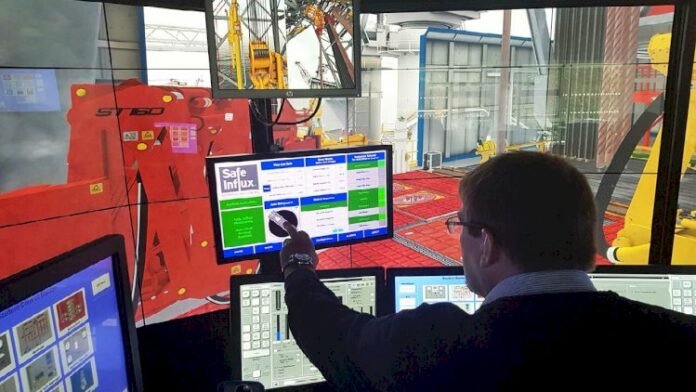Technology to automate well control, one of the biggest risks facing the oil and gas industry, has been developed by Safe Influx, a spinout company from RGU.
The system is designed to detect well influxes, kicks of gas or fluid from a formation into a wellbore, and take immediate corrective action to minimise the influx and prevent a well blowout. This will support the industry to improve safety, reduce cost and minimise any environmental impact.
Phil Hassard, Co-founder of Safe Influx and Drilling Simulation Manager at RGU’s Energy Transition Institute, said:
“We have designed this product to save lives. During development, we found that the industry has six blowouts for every 1,000 wells drilled. With over one million wells still to be drilled in basins across the globe this is potentially 6,000 well blowouts, leading to 120 major oil spills and loss of life, so the potential impact of Safe Influx is significant.
Further research showed that up to 70% of well blowouts are down to human factors. Drillers have an ever-increasing workload and naturally this means concentration can lapse. To support drillers, our system acts as an automatic preventative safety tool they can use to make the well safe as quickly as possible when the situation arises.”
RGU’s Startup Accelerator, the only funded programme of its kind in the northeast of Scotland, has supported the company, providing the team with essential funding, expertise and mentorship to shape the commercial side of the business. The team has also recently received significant funding from the Oil and Gas Technology Centre (OGTC), which will support the completion of a field test.
Bryan Atchison, Co-founder of Safe Influx and Well Engineering Manager at RGU’s Energy Transition Institute, said:
“We want to make sure that the industry knows our product is robust, so it has been validated by an Independent Verification Body. We have also tested it extensively on cyber rigs with real drillers and in simulations, and have consistently seen excellent results. To prove the effectiveness of our technology even further, we are conducting a field test in October on an older drilling rig. This will show that the system works in a realistic environment and can easily fit within a drilling rigs’ existing infrastructure without the need for significant modification, which will reduce installation costs. This field test has been enabled through funding by the OGTC and is supported by a major drilling contractor.”
Malcolm Banks, Wells Solution Centre Manager at the OGTC commented:
“The OGTC is pleased to support Safe Influx in the development and testing of their automated well control technology. This project is supported by industry partners and aligned with the Wells Solution Centre Roadmap focus area of ‘flawless delivery’, specifically the theme of decision-making. This technology could represent a further step towards automation of well operations and has the potential to enhance real time decision-making in critical well control situations.”
Together, Bryan and Phil have over 60 years of experience working in the oil and gas industry, 20 years of this has seen them focus on well control instruction. Phil said:
“We have designed our system with the end-user, the driller, in mind throughout. We have both worked on drilling rigs during our career so we know that when things go wrong offshore, they can really go wrong. We believe Safe Influx is the answer to the well control challenges we have seen first-hand, essentially automating a 100-year-old procedure. The Safe Influx system and team will be on hand throughout Offshore Europe at stand 1AA54. We encourage anyone who is interested in learning more about automated well control to come down and try out our product.”



